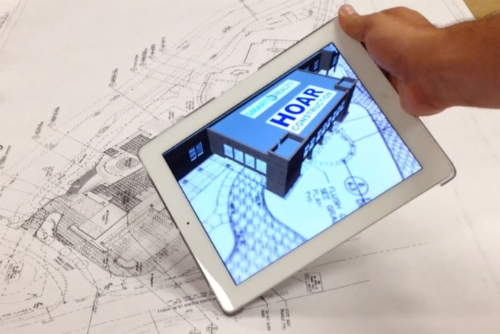The Expert (Short Comedy Sketch)
Funny business meeting illustrating how hard it is for an engineer to fit into the corporate world! Starring: Orion Lee, James Marlowe, Abdiel LeRoy, Ewa Wojcik, Tatjana Sendzimir
- Written & Directed by Lauris Beinerts
- Based on a short story "The Meeting" by Alexey Berezin
- Produced by Connor Snedecor & Lauris Beinerts
- Director of Photography: Matthew Riley
- Sound Recordist: Simon Oldham
- Production Designer: Karina Beinerte
- 1st Assistant Director: James Hanline
- Make-up Artist: Emily Russell
- Editor: Connor Snedecor
- Sound Designer: James Bryant
- Colourist: Janis Stals
- Animator: Benjamin Charles
The original short story "The Meeting" (in Russian): http://alex-aka-jj.livejournal.com/66...
Are We Passing the Uncanny Valley?
Today, almost isn’t close enough and can hurt your presentation. People get an uneasy feeling, which some say is inherent in our nature, and inherently don’t like things that are almost real looking, but not close enough. Are we passing the Uncanny Valley?
Did you enjoy this article? I would love to hear your thoughts, so don’t be shy and comment below! Please don’t forget to subscribe to my RSS-feed or follow my feed on Twitter, Google+ and Facebook! If you enjoyed the following article we humbly ask you to comment, and help us spread the word! Email me
Build a Good Name
“Build a good name. Keep you name clean. Don’t make compromise. Don’t worry about making a bunch of money or being successful. Be concerned with doing good work... And if you can build a good name, eventually that will be it’s own currency ”
Augmented Reality for Architects and Contractors
Everyone knows virtual reality, but have you considered how augmented reality in architecture and construction could help your firm?
Augmented reality is a live, copied view of a physical, real-world environment whose elements are augmented (or supplemented) by computer-generated sensory input. Virtual reality replaces the real world with a simulated one, whereas augmented reality takes the real world and adds to it with—in the case of architecture—a 3D model of your design.
With the help of advanced augmented-reality technology such as computer vision and object recognition, the information about the surrounding real world of the user becomes interactive and able to be digitally manipulated. In augmented reality, computer software must derive real-world coordinates, independent from the camera or from camera images.
SmartReality augmented reality app from JBknowledge
Augmented reality is used in architecture and construction by placing a 3D model of a proposed design onto an existing space using mobile devices and 3D models. AR has been used in the video gaming and media entertainment for a much longer period of time to show a real image interacting with one created from computer graphics. Its utilization matured in the AEC industries in the past five years when contractors such as Seattle’s BNBuilders began using it to show clients proposed designs in the context of existing conditions using iPads and other mobile devices on a construction site.
Seeing a Revit or other 3D model in context greatly assists in space planning and design visualization. Augmented reality was confined mostly to AEC firms that had large technology groups who could spend hours integrating Revit models with homemade 3D game engine models, but the technology has now been democratized and is available on a per-project basis, so small firms and even sole proprietors can take advantage of it.
SmartReality from JBknowledge, a technology company previously known for bringing subcontractors and jobs together, is a mobile AR app available as a beta test on a per-project basis. It can place a 3D model in context, viewable through an iPad or iPhone, whether on a 2D set of plans, in front of an actual site, or even on an image of your project’s site. Users focus on a given design or plan file with the camera on their iPad, iPad Mini, or iPhone; the app then recognizes the design, and the screen overlays a virtual model of what the project will look like upon completion. Anyone can see a Revit model in context (Revit drawings have to be imported into a different format to be recognized), in a full, 360-degree view.
Augmented reality has a wealth of design and construction uses beyond visualization, too. It can be used for design analysis to pick out clashes by virtually walking through your completed model. It fits the bill for constructability review by letting the architect and contractor collaborate on changes that have to happen between design and construction due to constructability issues. It can even assist with prefabrication of building components.
An oft-cited use of augmented reality came in the aftermath of the 2011 Christchurch earthquake in New Zealand. The University of Canterbury released CityViewAR, which enabled city planners and engineers to visualize buildings that were destroyed in the earthquake. It gave planners a great reference to what used to be there while also letting them gauge the devastation the quake left behind. Since then, it’s been used as a tool throughout Australia for construction and earthquake investigation.
To learn more about AR, check out 3 Steps to Tap into Visualization with 3ds Max, and read about virtual reality In Take a Walk Inside Your Designs.
Does your firm use augmented reality? If so, how do you use it? Please share your experiences below in the comments section.
CityViewAR is available for both iPhone and Android athttp://www.hitlabnz.org/index.php/products/cityviewar. To download the beta of SmartReality for iOS, visit http://smartreality.co/. To learn more about how BNBuilders has used augmented reality, visithttp://www.bnbuilders.com/building-information-modeling/.
Crystal Point Renderings
Please, feel free to give me some feedback. Moreover, if you have any technique questions, feel free to ask; I would love to share.
The Great Artist Problem
“For artists, the great problem to solve is how to get oneself noticed.”
Embracing Change
They say change is the only constant, and most people don't like change. Well I think that's half correct. To be sure there are a lot of change efforts at work that fail, because the effort wasn't planned well. Employees had no voice in the process, or the right resources weren't in place.This reality makes many employees jaded whenever any manager starts talking about change.But it's also true that humans get stuck in ruts.
Employees find comfort in the routines that define their day. Anything that upsets those routines just might be met with resistance. So what can you do to overcome that tendency and personally deal with change successfully, especially unexpected, difficult change? Good research and common sense tell us that attitude is everything. In sports, the elites have been studied. We know much about how they think and how they behave. They relentlessly focus on the positive perspective, framing things in a way that speaks to opportunities to be realized, instead of tough challenges to be dreaded.
They plan and adjust as needed, never believing that what they are today is who they need to be tomorrow. And the very same traits are found in great leaders. If you don't follow this advice,you know what? You become the professor who appears completely irrelevant to his students.Using 20 year old examples that don't really apply anymore. You become the company that ultimately fails because they believe customers will love the same product tomorrow that they loved today. Doesn't have to be that way. You can learn to make change work for you.
Coping with change and embracing change is a skill. It starts with building an identity bigger than only your professional identity. Even if you love what you do, that's too narrow. Healthy people have multiple, positive identities in addition to their professional identity. This might include father or volunteer or maybe basketball coach. Whatever it is, remember that to stay healthy,you need to be more than just one thing. Next, listen to the age-old advice about counting your blessings.
There's no mystery to share here. You just need to do what many people neglect to do.Periodically stop and reflect on the many specific things you're lucky to have in your life. A person who supports multiple positive identities in life and remembers to take stock of the things they're lucky to have in life is exactly the type of person who has the best odds of successfully navigating change. Okay, now when change actually hits, whether it's a merger you never saw coming and the new boss that comes with it or if it's the loss of your job that you didn't expect.
I want you to react in three simple ways that will help you make change more about possibilities instead of pains. First, remember to think before you act. When big change hits, don't make hasty decisions. Your emotions will be on overdrive. So here's the rule. No big decisions for at least 48 hours. Depending on what's happened, you'll be thinking about your team, your house, your finances, your family, you name it. Resist making quick decisions on any of these for at least 48 hours.
Next, when the shock is gone, it's time to start adjusting, to begin facing your new normal. This begins with a passionate commitment to being positive. You have to make the choice to be better, not bitter. Think about that choice consciously, first thing in the morning, everyday following a big change. Finally, of course, you have to take action. I want you to think about a multi-month plan of attack loaded with specific tasks and deadlines. Depending on the nature of the change the tasks will be different.
If there are problems with the new boss, this might include learing how to initiate tough conversations. Or if you're our of work, you might be spending a lot of time becoming laser focused on networking. This all might sound pretty easy in the abstract, but believe me, easy becomes very difficult when you're stressed out and dealing with the unexpected. That's why it's so inspiring to witness someone deal with change and adversity effectively.
What Is The Resolution Of The Eye?
The new iPhone camera is 8-megapixels. Meanwhile, Canon is reportedly testing a new DSLRwith 75-megapixels. But how many megapixels is the human eye? That is, how many megapixels would an image the size of your field of vision need to be to look normal?
Well, as Vsauce explains in its latest video, the better question is actually: What is the resolution of the human eye?
It's a complicated question, one that must take into account the peculiar anatomy of the eye which is different than the less peculiar engineering of a digital camera. As such, it's worth watching all ten minutes of the video, explaining not only how we see but also how well. Spoiler: the human eye is 576 megapixels—but really only about 7 megapixels matter.
Minneapolis, MN Townhouses
Here are a couple color options for a townhouse in Minneapolis, MN. The association commissioned me to help them study colors prior to a commitment.
The Art & Science Of Creativity
The Art & Science Of Creativity
I’m really excited to announce that my newest online video course, The Art And Science Of Creativity is now live on Udemy.
How many times have you heard that certain people are just “born creative,” and certain people “aren’t.” It’s not true. Creativity is a process with clearly defined steps that you can learn and apply towards ANY project. Using techniques taken from brain science to rocket science, you’ll learn that everyone, including you, is born creative. If you think of yourself as creative already, this course will make you more efficient and productive with your creativity. If you think of yourself as one of the “not creative” people, this class will show you that you ARE creative, and how to bring that creativity to fruition.
The course teaches a creative process: from coming up with an initial idea, unpacking and expanding upon it, to shaping and refining it, the seven key principles of creativity – principles that apply whether you are working by yourself or as part of a team, the common roadblocks to creativity, and the remedies to get you through these roadblocks if and when they occur, so you can move forward on your project.
And in the course we talk about the brain science of the unconscious, how it applies to creativity, and how to give your brain the right data it needs to figure out the problem or next course of action, even when you are not consciously working on it.
Here’s the opening lesson:
Go to the Udemy page for more information, to register for the course, or preview more videos.
We are offering a special price ($89, more than 50% off) if you register by March 3, 2014 and use the coupon code: VIPEntry
Instead of teaching this one by myself, I’ve got a co-instructor, Sam Spitzer. Sam is a rocket scientist, inventor, and composer. He’s very creative! I think you will enjoy learning from the two of us together.










